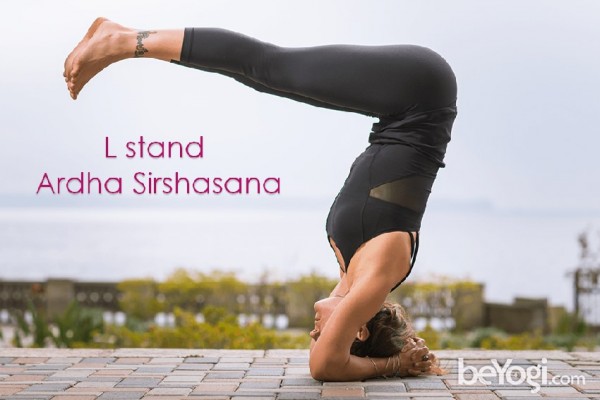
Ardha Sirsasana L Shape
Looking for an activity that increases brain power? To rejuvenate nervous system and the brain Ardha sirsasana helps. It is an advanced pose with many health benefits.
Apart from increasing brain activity, it helps in increasing lungs capacity to fight against cough, cold, asthma.
Blood circulation to legs improves, edema and fluid buildup in legs decreases. Metabolic rate stabilizes and helps to cure depression, anxiety and reduces stress.
More benefits we get by performing this pose – overall function of various organs and boosts confidence of a person and makes personality more attractive.
Perform this pose under supervision till you get hang of it – Healthy Life.
LEVEL
- Advanced, Intermediate
Anatomy
- Abs, Arms, Heart, Shoulders, Spine
- Pose Type
- Inversion
Sanskrit
Ardha Sirsasana (ard-HA shear-SHAHS-anah) ardha = half sirsa = head
BENEFITS
- Stimulates and nourishes the brain
- Relieves stress and neck tension
- Tones the abdomen
- Improves cardiac output; lowers heart rate and blood pressure
- Strengthens the shoulders
- Improves spinal strength and alignment
CONTRAINDICATIONS
- Spine pathologies
- Shoulder pathologies
- Heart conditions
- Pregnancy
HOW TO
- Come into in a tabletop position. Bring your forearms down onto the mat. Keeping the elbows parallel to one another, join the hands and interlace the fingers.
- Place the top of your crown onto the floor between the hands, and cup the palms behind the back of the head.
- Inhale and lift your knees off the mat. Walk your feet toward the elbows into an inverted “V” shape. Allow the weight of your body to shift into the shoulders and forearms. Be cautious to not put excess weight on your head or neck.
- Exhale and firm your abdominals. Lift your feet off the floor and draw them up toward the ceiling. Stack the arches of your feet over the center of the pelvis, and the pelvis over the crown.
- Slowly begin to shift your hips back until they align with the back of your skull; and simultaneously lower your legs until they are parallel with the floor, making an inverted “L” shape. Flex the feet.
- Hold this pose for five to 10 slow breaths.
- To exit L Stand pose, on your exhale, draw the abdominals in for support and slowly lower your feet down onto the mat. Then relax into Balasana (Child’s pose).
MODIFY OR REPLACE
- Practice against a wall for support.
- Place a towel under the crown of your head for support.
- Walk the knees close to the chest and lift the hips to practice.
SEQUENCING TIPS
Before:
- Makarasana (Dolphin pose)
- Adho Mukha Svanasana (Downward-Facing Dog)
- Prasarita Padottanasana (Wide-Angle Forward Bend)
- Pincha Mayurasana (Feathered Peacock pose)
After:
- Balasana (Child’s pose)
- Adho Mukha Svanasana
TEACHING CUES
- Engage the abdominals and press through the shoulders for support.
- Squeeze your thighs together and press through the heels of your feet to extend the legs. Keep the shoulders active.
- Be cautious not to collapse weight onto the neck.
- As you walk the feet toward the torso, feel your weight shift into the forearms and shoulders.
VARIATIONS
- Extend the arms into an “L” shaped Handstand
- Legs can straddle or split
- Sirsasana (Tripod Headstand)
- Salamba Sirsasana (Supported Headstand)
WATCH OUT FOR
- Straining the neck, shoulders, elbows, or spine
- Placing too much weight on the head and neck
- Shifting the hips too far back
This article and image is published with permission from www.beyogi.com
Author: HealthyLife | Posted on: February 21, 2018






















Write a comment